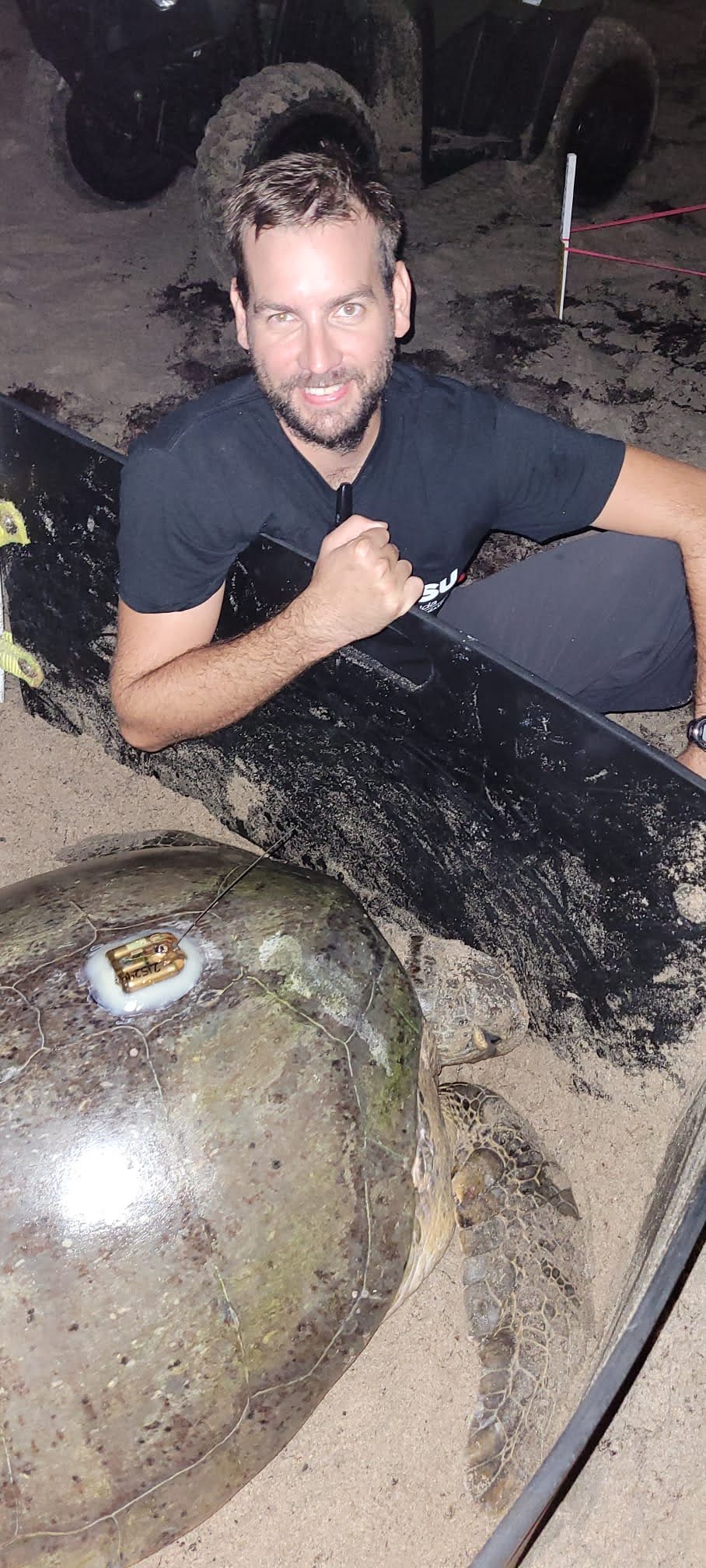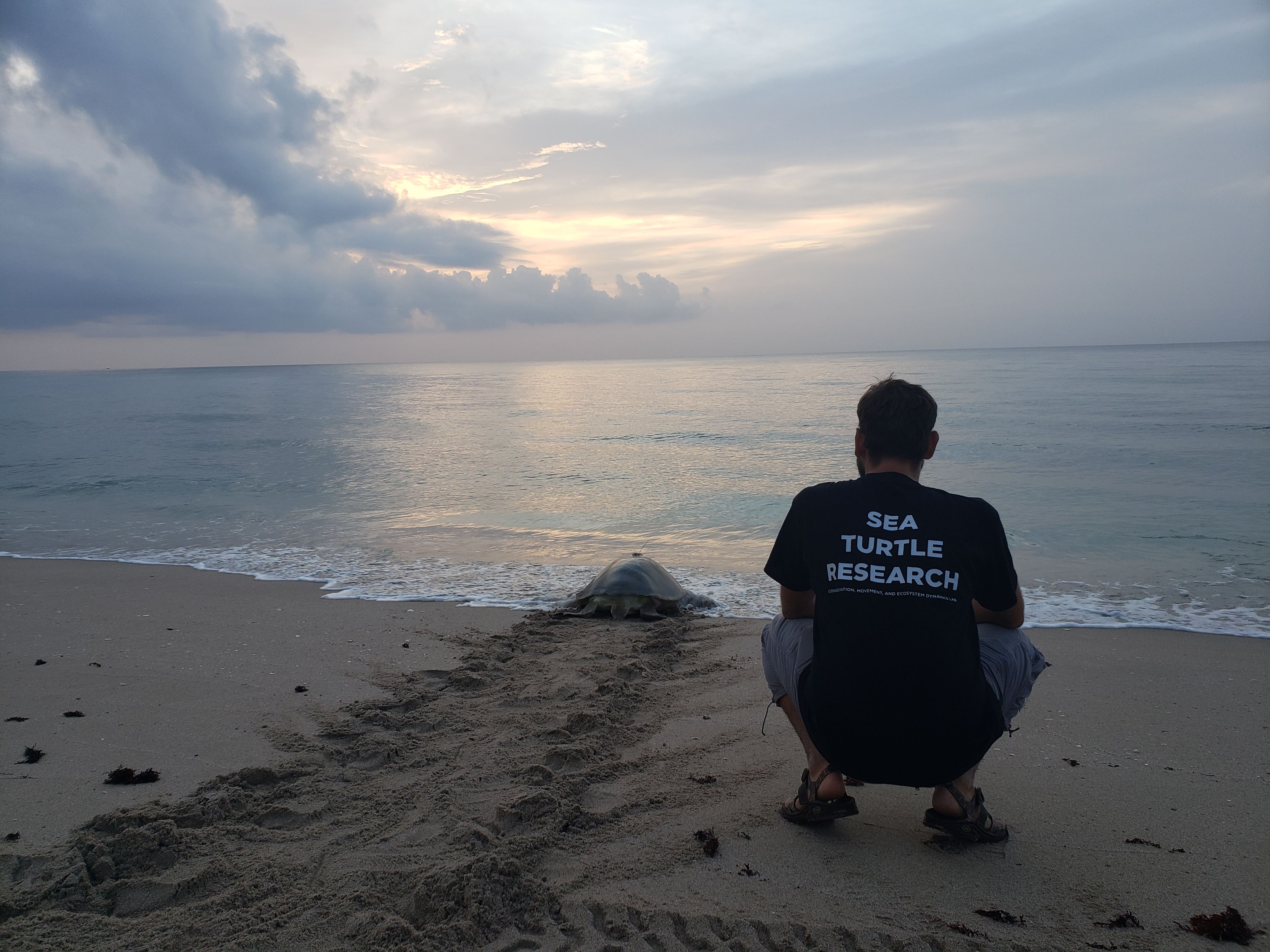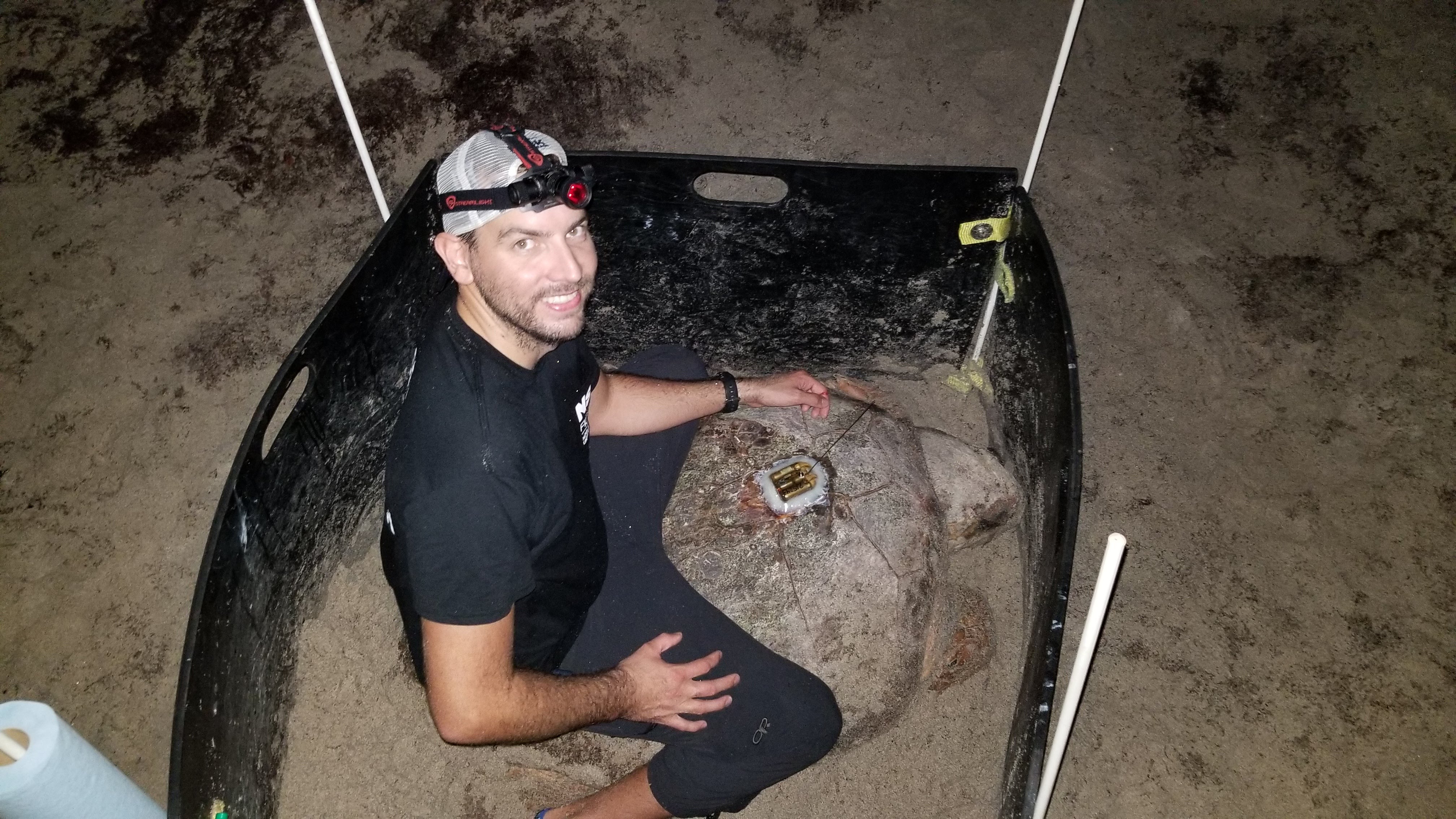
Glenn Goodwin
Advisor: Dr. Derek Burkholder
Project Summary:

All activities depicted here were performed
by authorized personnel on FWC-MTP-255.
Three of the five species of sea turtles that inhabit South Florida waters nest on Broward County (BC) beaches: loggerhead turtles (Caretta caretta), green turtles (Chelonia mydas), and leatherback turtles (Dermochelys coriacea). Loggerhead and green turtles constitute 95% and 5% of nests, respectively; less than 1% of sea turtle nesting in BC is attributed to leatherback turtles (Burkholder and Slagle 2017). The U.S. Endangered Species Act lists both loggerhead and green turtles as threatened, and both species are listed under Appendix I by the World Conservation Union (IUCN 2018). These species are further protected under Florida state statutes through the Florida Fish and Wildlife Conservation Commission (FWC), granting international and federal protection. Florida represents 40% of the global loggerhead nesting population and hosts 90% of nesting for the North Atlantic (NAtl) loggerhead population (FWC 2016, IUCN 2018). As the predominant nester in the highly disturbed BC (e.g. coastal hardening, tourism, light pollution, Burkholder and Slagle 2017), it is imperative to have a clear understanding of loggerhead population dynamics and ecology to better inform management efforts. As a large bodied grazer, green turtles play an important role in coastal ecosystems. The BC nesting aggregation of greens is part of the threatened NAtl population, making it critical to investigate the same characteristics of these turtles as well (Seminoff 2004).
Nesting activities of loggerhead and green turtles on BC beaches have been extensively monitored by NSU for 28 years, but there is a paucity of information on the behaviors of these animals once the nesting females leave BC beaches. The purpose of this research is to investigate the ecology of loggerhead and green turtles that nest on BC beaches, including inter-nesting behavior, core-use areas, migratory corridors, overlap between critical habitats and anthropogenic threats, and genetic population structure, which remain unknown (Seminoff 2004, Shamblin et al. 2011, Shamblin et al. 2015, Casale and Tucker 2017, Hart et al. 2018). Our goal is to use these data to improve current population models and guide scientifically-based management strategies for the NAtl populations of these two threatened species. Our objectives coincide with multiple tasks listed in the U.S. Fish and Wildlife Service recovery plans for each (NMFS 1991 and 2008; for specific tasks, please see Supplemental Information). Through the combination of satellite tracking, stable isotope analysis, and population genetics, our objectives for this study are:
- Objective 1. Identify high-use inter-nesting and foraging habitats, as well as major migratory corridors, for loggerhead and green turtles nesting in the disturbed nesting habitat of BC.
- Objective 2. Compare inter-nesting behaviors of turtles nesting in the disturbed nesting habitat of BC to inter-nesting behaviors of turtles nesting in a relatively undisturbed nesting habitat of Dry Tortugas National Park (Hart et al. 2012, Hart et al. 2013).
- Objective 3. Evaluate overlap between critical habitats of high-use foraging and migratory areas with anthropogenic threats (e.g., trawl and longline fisheries, Finkbeiner et al. 2011) to identify critical conservation habitat (Hart et al. 2018).
- Objective 4. Use stable isotope analysis to investigate at what trophic level these turtles are feeding within core-use foraging areas identified by this study.
- Objective 5. Further develop models that predict foraging habitat location based on stable isotope signatures of blood and tissue (Ceriani et al. 2014, Vander Zanden et al. 2015).
- Objective 6. Elucidate the genetic stock structure of the BC nesting turtles and identify how these fit within the genetic framework of the larger NAtl and Peninsular Florida (PF) populations for each species.
This project has already begun characterizing the nesting behaviors of BC sea turtles, including inter-nesting behavior and identification of key foraging grounds and migratory corridors. Preliminary analyses have shown that BC nesting turtles travel to foraging grounds in Mexico, Florida Bay, Northwestern Cuba, Florida Keys, Marquesas Key, and Northern Bahamas (unpublished). Continuing this project is crucial to understanding the spatial ecology and possible threats associated with the movements of these turtles. This work is significant due to the demand for advanced modeling and conservation tools to allow managers to pursue effective and targeted protections for these species (Hart et al. 2018). By providing tools that allow easy visualization and identification of threatened habitats (e.g., seasonal overlaps between major migratory corridors and trawl fisheries), priorities can be properly aligned to target critical conservation habitat (Hart et al. 2018). Incorporating new data from an uninvestigated population will further improve and increase the efficacy of these conservation tools.
Fieldwork
All activities depicted here were performed by authorized personnel on FWC-MTP-255.

